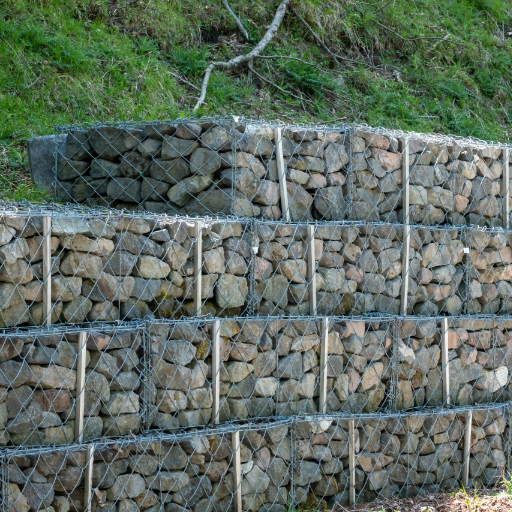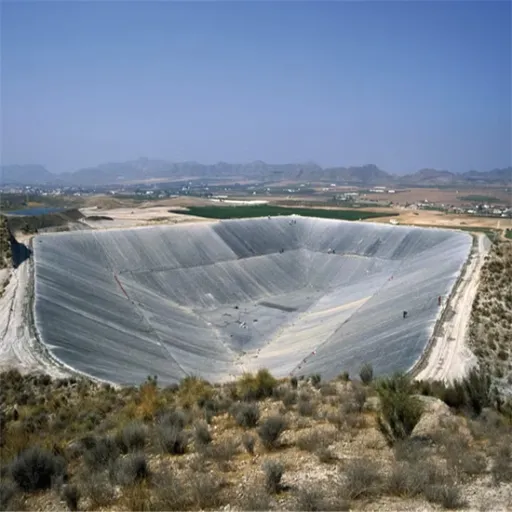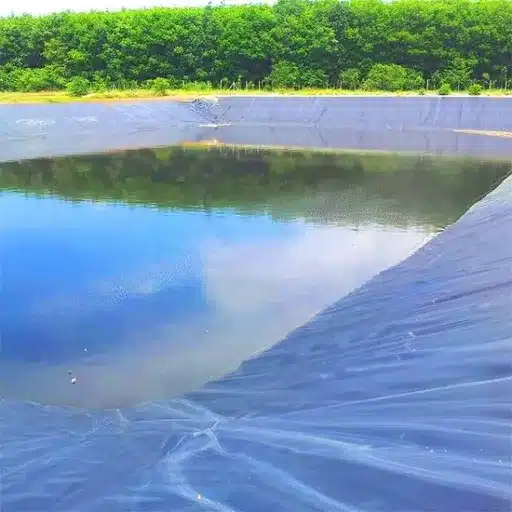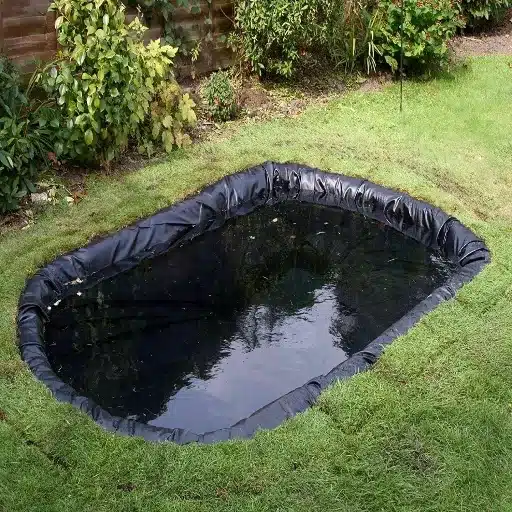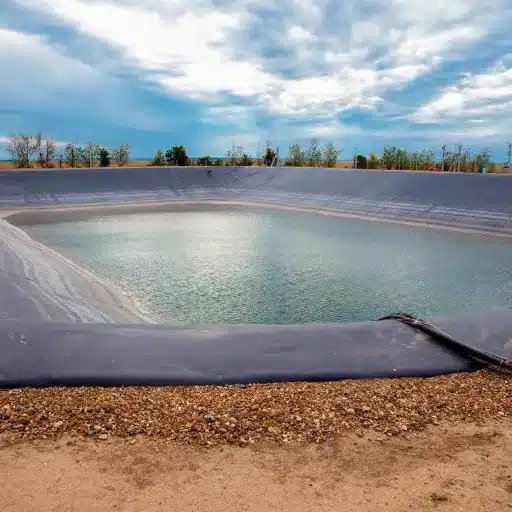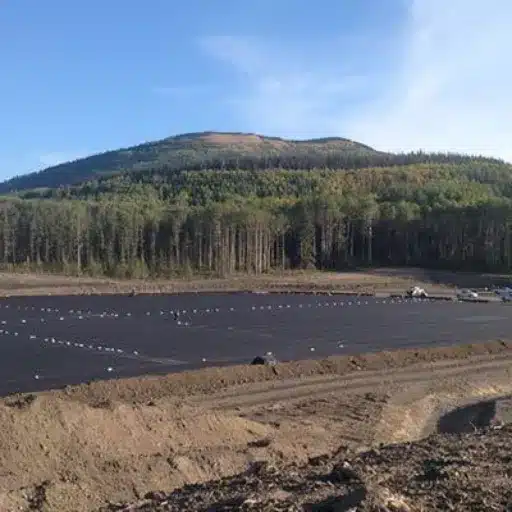Gabion baskets have become an integral subject, creating durable walls and landscapes within different areas. If the need for a solid retaining wall or just a design of aesthetics in the outdoors presents itself, then there are few things gabion walls cannot offer in terms of strength, sustainability, and style. But what really are gabion baskets, and why is the construction landscape storming their name? This article shall take you through all that you need to know about gabion walls, their advantages, and design possibilities, as well as tips to incorporate them into your next project. Hang on tight as you stand to find out how versatile these structures are, capable of transforming not only your property’s functionality but also aesthetics!
Understanding Gabion Wall Construction
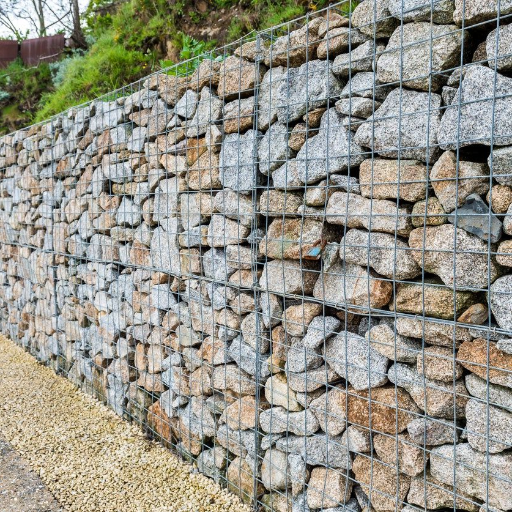
Gabion walls are structures formed from wire mesh baskets, with filling materials consisting of rocks, stones, or concrete. In general, these walls find applicability in building and landscape works such as erosion control, retaining structures, or even as decorative features. They gain appeal because of their sturdiness, affordability, and their natural style blend with the ambient environment.
What is Gabion Wall?
In civil and landscape engineering, a gabion wall is a feature formed by filling wire mesh baskets with stones, rock, or concrete. Being set up in strongly functioning ways, the wall is thus aesthetically pleasing and useful. These days, technically referred to as noise barriers and retaining walls, gabion walls originally served as civil engineering structures to control erosion and floods.
Having an adaptive and nature-friendly design, a gabion wall can provide excellent drainage to eliminate the chance of water accumulation and hydrostatic pressure that could defeat the function of gutting in support of sloping terrains or diverting floodwaters into safe pathways. Also, the fill materials being natural allow them to blend well with the environment around them.
Key Data and Features:
Durability: Gabion walls enjoy a very good lasting nature, owing to corrosion-resistant wire mesh used and durable materials as fillers into them. Usually, stainless steel or galvanized steel is employed to cage the structures to make them highly stable and resistant even when faced with adverse climate conditions.
Cost-Effective: Compared to other alternatives, like reinforced concrete walls, gabion walls are cheaper since they often employ locally sourced filler materials.
Flexibility: Unlike concrete walls that are rigid, gabions can absorb and flex slightly with minor ground movement, providing an advantage in areas prone to earthquakes or settling.
Environmental Benefits:
Reuse of materials like old bricks or stones for installation can help decrease construction waste.Since gabions reduce the flow of groundwater, water runoff is lessened, thus greatly reducing environmental impact.
Height Capability: Standard-type gabion walls may be built from 2 to 10 feet or taller. For extremely large walls, one has to be distinguished by engineers to have staking of multiple layers with a great support system behind it.
Explanation of Gabion Basket Panes
The key components of a gabion basket that allow it to be structurally sound and serve in diverse applications:
Wire Mesh: The main structure of a gabion basket is formed of galvanized or PVC-coated steel wire mesh woven in either hexagonal or square patterns. These coatings protect against corrosion and allow them to have an extended lifespan under harsh environmental conditions. For example, highly rated galvanized wire can last over 50 years depending on the level of environmental exposure.
Fill Material: Gabions are usually filled with angular stones, crushed rocks, or even recycled concrete. The angular stones have the advantage because they lock into place due to their irregular shapes, which increases stability of the overall structure. The fill material size usually varies from 3 inches to 8 inches, depending on the design and intended use.
Diaphragms: To maintain stability and avoid bulging, gabion baskets are divided into smaller sections using wire diaphragms. These compartments help to distribute fill materials evenly and maintain overall structural integrity against external loads, be it water flow or poses great weight in soil.
Tying-Fastening: Fastening of gabion baskets is usually by steel ties, spirals, or special C-ring fasteners that hold all the edges and joints with great strength. Often double twist wire is used on the hope of being that it will not unravel even when one section of wire is broken.
Types of Gabion Walls
Gabion walls can be categorized into different types, including gravity walls, reinforced walls, wire mesh walls, basket walls, and mattress walls.
| Type | Description | Purpose | Material | Size |
|---|---|---|---|---|
| Gravity Walls | Heavy and stable | Retain slopes | Stone, wire | Large blocks |
| Reinforced | Strengthened base | Stronger support | Mesh, steel | Varies |
| Wire Mesh | Lightweight, flex | Erosion control | Mesh, rock | Flexible size |
| Basket Walls | Box-shaped fill | Retain or shield | Metal baskets | Standard sizes |
| Mattress Walls | Thin and flat | Erosion, drains | Wire, rocks | Low thickness |
Pros of Gabion Walls
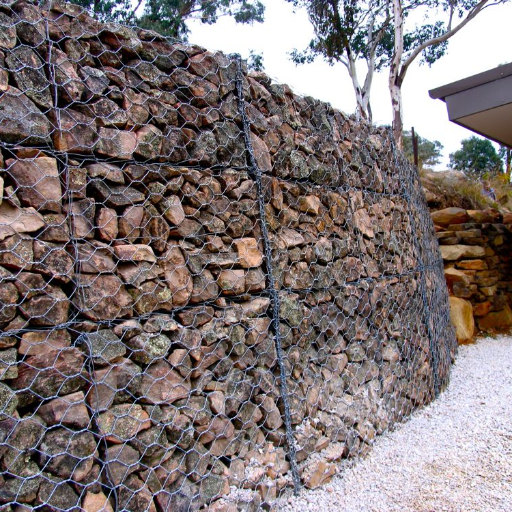
Gabion walls possess several advantages, such as being durable, cheap, and environment-friendly. They prevent erosion, allow natural drainage while blending into scenic landscapes around them. Such walls are flexible, can absorb movements from land shifts or water flow intensity, ideal for places where land may shift, or water flow changes.
Environmental Impact and Sustainability
Gabion walls are known for their excellent environmental impact and sustainability. They utilize natural or recycled materials for their construction, e.g., stones, gravel, or even concrete debris; hence they facilitate the reduction in the manufacture of new material. They boost biodiversity by forming crevices for plants and small organisms to flourish.
Recent discoveries emphasize their adaptability to climate change resilience. For instance, several studies report gabion walls help in reducing soil erosion by a massive 80% as they stabilize slopes and divert water flow. In excess, they’ll promote flooding mitigation while they allow water to percolate through rather than hold on to impermeable surfaces. In a 2023 environmental report, it was stated that in several flood-prone areas, gabion walls have seen water damage to residential and infrastructural properties decreased by 25%.
Plus, in context to the long time sustainability of gabion walls are in offering low maintenance and durability. There is no fast degradation unlike those of concrete walls under their natural weathering conditions. Hence, in these aspects, gabion walls provide a greener and cheaper alternative for modern infrastructural projects.
The Economy Behind Gabion Baskets
Gabion baskets are being enjoyed more for their environmental benefits and for being cheap. Installation dues for gabion walls are between $10 and $30 per square foot, varying according to size, materials, and location. This is a lower rate compared to those of the traditional retaining walls such as concrete or brick, which can give out at around $40 per square foot.
The little maintenance is required after installation also adds to the passive cost-cutting aspect of gabion structures. If properly built, they can last for more than 50 years without requiring significant repair costs, thus financially viable constructs for infrastructure. Infill can moreover be made from locally sourced rocks and materials, which helps cut down costs in transportation and materials.
Thus, overall, gabion baskets present perhaps the best solution with respect to performance and price for both large-scale projects and small residential setups. Their potential for saving money while possessing a reasonable life span situates them well as a credible option for modern-day sustainable construction.
Structural Advantages of Gabion Retaining Walls
Being one of the best retaining walls when it comes to structural efficacies and engineering practices, gabion retaining walls provide the best solution for particularly high stresses. This is due to their ability to absorb a level of stress and deform while cracking or breaking inputs are common features in rigid structures. Hence, they’re best against loads and seismic activities. Another advantage is that gabion walls are able to combine strength and permeability to keep water flowing through the structure. This property’s benefit is natural drainage through the structural system, thereby restricting the negative effects of hydrostatic pressure commonly experienced with the failure of retaining walls.
Recent researches among several hydrologic instrumentation have proven the durability of the gabion structure. It was shown that gabion retaining walls remain durable for about 50 years and more, depending on the materials employed and the maintenance strategies used. Gabion systems are also commonly constructed with zinc-aluminum galvanized steel, which is 3-5 times more corrosion-resistant than standard galvanized materials, according to Industry data. This provides their long life even in harsh weather conditions.
One important performance parameter is their capability to bear loads. It is shown by some studies that gabion walls can resist loads up to 2000 kPa, which has qualified the walls for residential landscaping activities and industrial activities. Eco-friendly initiatives use also gabion walls because they use locally sourced rocks or materials reclaimed as infill, thereby further minimizing the carbon footprint.
Structurally, therefore, gabion retaining walls are well placed, aided by modern developments, to serve as a dependable and sustainable solution for a wide range of applications.
Installation Tips for Building a Gabion Wall
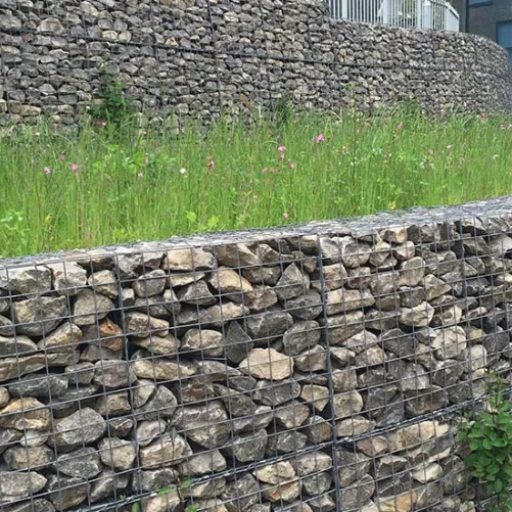
I would always recommend working from a bed having a well-leveled ground and compacted properly with gabion walls. The gabion baskets should be assembled following the manufacturer’s instructions and attached so that they are secure. One would then fill the baskets with something like suitable rock or reclaimed stones, ensuring that an even weight distribution is maintained. Finally, one would have to inspect the alignment and stability of the wall throughout construction to protect its durability and ensure a neat finish.
Step-by-Step Guide to Building a Gabion Wall
The building of a gabion wall is a matter of careful planning, correct materials, and attention to detail for a solid wall that will weather the passage of time and be pleasing to the eye. Here is the in-depth step-by-step process:
Step 1: Plan and Measure the Area
Before beginning construction on the gabion wall, first measure out the general area in which the wall will be built. Specify exact dimensions of height, length, and thickness of the wall. Mostly, gabion walls are used to retain walls other landscaping purposes or erosion control and can be from two feet high to over twelve feet, depending on the purpose.
Step 2: Assemble Materials and Tools
You will need:
Gabion Baskets- Made from galvanized steel with PVC coating to withstand corrosion, or stainless steel for durability.
Filling Materials- Should be rocks, stones, or gravel, and about 3 to 8 inches in diameter to allow for a good fit and stability. Heavy denser materials such as granite and sandstone should be used.
Tools- A shovel, gloves, a level, wire cutters, and possibly additional fasteners for securing the baskets.
Step 3: Prepare the Foundation
Ensure that the ground where the wall will be sitting is leveled and compacted. If higher than 3ft, dig in a trench about 6 inches deep and fill with a layer of compacted gravel to provide extra structural integrity and drainage. Should the soil be unstable, lay geotextile fabric beneath the foundation to stop erosion.
Step 4: Assembly of Gabion Baskets
Assemble gabion boxes according to manufacturer specifications. Use wire fasteners or lacing wire to secure all joints properly to guarantee that the basket will maintain its shape. Reinforce all corners and joints for added rigidity.
Step 5: Filling Gabion Baskets
Carefully put stones or reclaimed materials in the baskets, ensuring an even distribution of weight. Position bigger stones along the edges to ensure a neat finish, while smaller ones fill the interior. During filling, hammer down or tamp the stones to compact the filling and avoid any empty spaces.
Step 6: Stacking and Securing Multiple Layers (If Applicable)
For heights beyond a single basket, place the next level layer carefully on the filled baskets. Bind the layers via spiral binders, helicoidal wires, or heavy-duty zip ties to produce a continuous path of support. Constantly monitor the alignment until the wall is straight.
Step 7: Final Adjustments and Inspection
Inspection should be done for all components, alignments, and stability. Adjustment must be done where necessary, and make sure there are proper drainage provisions. Well-constructed gabion walls allow water to flow freely through the barrier of rock and thus prevent hydrostatic pressure.
Tools and Materials Needed
Gabion Baskets or Cages: Typically made from galvanized or PVC-coated steel wire, gabion baskets come in various sizes. They should be corrosion-resistant to ensure long-term durability. Common sizes range from 1x1x1 meter to 2x1x0.5 meters, depending on the project’s design.
Rock or Stone Filler: Non-biodegradable, durable materials such as granite, basalt, or limestone are commonly used as filler to give stability and resistance to weather conditions. Ideal rock size is typically 3 to 8 inches in diameter to prevent stones from escaping through the wire mesh.
Geotextile Fabric: A permeable material used to separate soil from the rocks, geotextile fabric prevents clogging and ensures proper drainage. Non-woven geotextiles are often recommended for gabion projects as they offer good filtration properties.
Anchoring Tools: Metal stakes and anchor rods improve the stability of gabions, especially for tall or free-standing walls. Anchoring ensures the structure can resist lateral forces such as soil pressure or strong winds.
Wire Lacing Tools or Clips: Tools for connecting gabion panels securely, such as C-rings, helicoidal fasteners, or hog rings, are essential to maintain the cage’s integrity. Automated lacing tools can save significant time on large projects.
Gravel or Drainage Fill: To enhance water drainage behind the wall, small stones or gravel can be layered at the base of the gabion structure.
Protective Equipment and Gear: Gloves, safety goggles, and work boots are crucial for worker safety, especially when handling sharp wire edges and heavy rocks.
Mistakes to Avoid
Wrong Foundation Preparation – Perhaps one of the most typical errors when constructing gabion walls is to ignore the preparation of a stable and level-foundation. The 2023 guide on retaining-wall construction further observes that an unstable foundation could eventually bring about the collapse of the structure, owing to uneven distribution of loads. Clear the area of debris and compact well before building.
Using Incorrect Stone Sizes – If stones that are too small fill the gabion baskets, the material will leak through the wire mesh. Stones about 3-8 inches in diameter are recommended by experts, depending on the mesh size. Studies show that this range best balances structural integrity with sightly appeal.
Ignoring Drainage Systems – Windows drainage can lead to increased hydrostatic pressure, thus adversely affect the stability of a gabion wall. Experts suggest that one should use gravel or some form of drainage fill about 6 inches in thickness behind the wall to give water an ample flow.
Failure to Properly Anchor the Wall – For taller structures, it is therefore very critical to anchor the gabions into the soil so that they do not lean or buckle over time. The present-day guidelines recommend that at least one-third of the structure from the bottom should be embedded into the ground for adequate stability.
Materials Quality Control Neglected – If inferior wire mesh or materials prone to rust are used, premature failures of the gabion walls may occur. Thus, selection and use of high-quality galvanized or PVC-coated wire are considered critical factors that affect the longevity of the walls, particularly in areas prone to high rainfall or salty air.
Ignoring Maintenance Work – Gabion walls are made to keep whatever is inside for a very long time, but it is the best practice to periodically inspect and maintain them against any signs of aging. Keeping an eye on any distortions in the mesh, or erosion, can do wonders for the longevity of the structure.
Following these sound practices, along with the most up-to-date gabion wall construction data, will allow builders to avoid stumbling blocks that commonly arise and create durable and aesthetic structures.
Gabion Wall Design Ideas for Landscapes
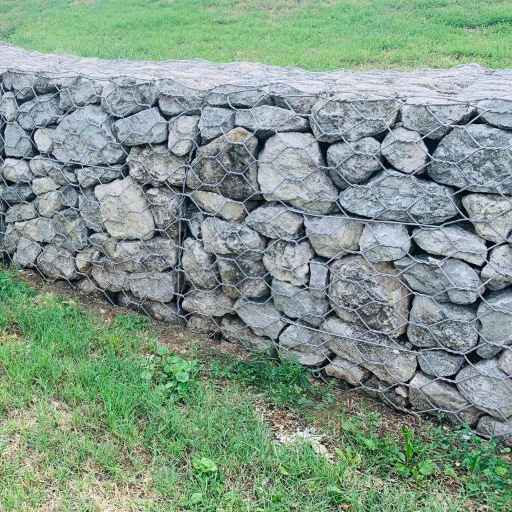
While designing gabion walls for landscaping, my main concerns are function and aesthetics. I look at the expected purpose, the site conditions, and the surrounding environment. Using different materials, such as colored stones or planting greenery between the meshes, would increase the attractiveness of the wall and let it blend into the landscape seamlessly.
Garden Designs That Incorporate Gabion Baskets
Design possibilities are nearly endless with gabion baskets, changing the ambiance of the garden along with offering the much-needed specification of space. According to the newest design trends, there is a growing inclination to use gabion baskets for building raised flower beds, seating spaces, and outdoor fireplaces. Their longevity and ability to be customized working makes them sustainable options if filled with stones proof of local quarrying or reclamation.
They provide good drainage for the garden. Research shows that waterlogging of plants due to the impermeable nature of traditional walls is sadly an important cause of death; preventing such waterlogging due to the porous wall made of gabions is a key advantage in garden design. In addition, gabion walls provide sound barriers, with their structure able to reduce sound pollution by 10 decibels, making them suitable for working gardens located in cities.
Increased application of greenery together with gabion baskets is a trend with significant momentum just now. Creeping vines or drought-tolerant plants planted on or around the gabions will help to soften the starkness of the metallic frame, thus opening up an avenue for integration with the natural surroundings. With creativity and good planning, gabion baskets can be integrated as both utility and beauty into contemporary landscape projects.
Innovative Uses of Gabion Wall for Outdoor Spaces
Their popularity in both residential and commercial outdoor spaces increased over the last two decades thanks to their versatility, sustainability, and aesthetic potential. In fact, the edifice of gabion walls is poised to rise at a CAGR of 5.2% over the next five years, owing to the interest in eco-friendly and durable construction solutions. Constructed with galvanized steel and anything from stone to concrete, they can undertake a bevy of inventive uses.
Seating: Gabion benches provide sturdy and weather-resistant seating for gardens and parks. Designers have been using wood or concrete tops to elevate simple gabion walls into double-use seating elements.
Privacy and Noise Reduction: Gabion walls are used as privacy screens and noise barriers. Studies have found that gabion walls can reduce noise levels by 30 decibels when properly installed, making them ideal in urban settings near busy roads.
Retaining Walls for Sloped Landscapes: Gabions are used to retain soil on slopes, preventing erosion while being permeable to water, thus reducing flooding risks. They require less maintenance and are more environment-friendly compared to standard concrete retaining walls.
Vertical Gardens: Plants can actually be grown within the gabion framework to create lush living walls that enhance air quality and improve outdoor spaces with a green hue. Succulents and hardy plants that thrive in rocky climes are especially suited for this application.
Customizable Aesthetics: Contemporary designs now incorporate recycled glass, colored stones, or ceramic pieces inside the gabion framework for enhanced aesthetics. When combined with the right lighting system, gabion walls become the star attraction, especially for outdoor activities at night.
With innovations such as these and a growing environmental awareness, gabion walls remain a relevant landscaping solution, marrying the practical with the visually stimulating.
Some Stunning Gabion Wall Installations: Residential Retaining Walls
Gabion walls are the most preferred for residential landscaping when it comes to a retaining wall because it is durable and beautiful. According to recent statistics, gabion walls may last for 50 years and more when they have been well-installed with high-quality materials. Besides giving the modern look to a sloping yard or garden terraces, they prevent soil erosion, thus making them one of the popular selections in the area. Homeowners usually fill gabion walls with local materials, such as river rock or crushed stone, to reduce environmental impact further.
Noise Barriers in Urban Areas
Adequate representation is increasingly founded on gabions as sound barriers in urban settings. Study has shown that 30% noise pollution can be abated with the porous nature of gabion walls, thus making a great ambience in noisy urban settings. For example, gabion walls have been successfully integrated with vegetation in European cities to create living walls to improve air quality.
Coastal and Riverbank Protection
Gabion walls are widely employed in civil engineering for coastal and riverbank protection. Recent reports underline their efficiency against coastal flooding, where the flexibility and permeability allowed by gabions assist in dissipating water energy. Gabion designs have also been lauded for being cost-effective compared to traditional concrete structures and, in some instances, 30% cheaper.
Creative Artistic Projects
Designers are repurposing the gabion for artistic installations and smaller scale applications such as outdoor furniture or garden planters. For example, a public park in Melbourne incorporated gabion seating filled with colored recycled glass and gained recognition for both aesthetic beauty and environmental sustainability. This creativity shows how gabion design can be put in numerous ways beyond just their conventional basic roles.
Integrating modern ideas yet focusing on eco-consciousness has kept the gabion wall installation relevant, instilled with practicality, and spanned visual charm through different industries.
Disadvantages of Gabion Walls
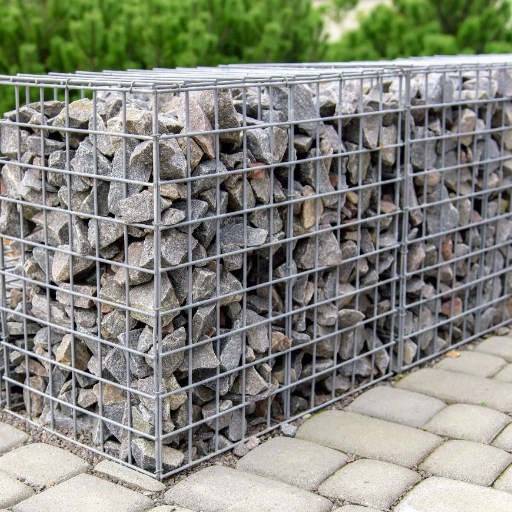
Although I can concur with the many advantages that can be attributed to these walls, certain disadvantages reflect against them. For instance, they can be very labor-intensive to install, and they may call for refurbishing to prevent erosion or the displacement of filler materials. Furthermore, depending on the design, they do not always go really well with a natural landscape, and in some cases, this is a real concern from an aesthetic or environmental perspective.
They Require Maintenance
Proper maintenance of gabion walls is essential to ensure that they remain serviceable for a long time. Regular inspections should be carried out to identify any indications of weakening of the structure, such as displacement of stones or corrosion of the wire mesh. For example, galvanized or PVC-coated gabion baskets corrode as time passes, especially if far from the coast and in a high-moisture environment. In fact, current research reveals that corrosion may be observed some 5–10 years later in high-salinity environments if unprotected materials were used.
The growth of vegetation can also be a good thing or a challenge to the gabion walls; while plants make the structure look nicer and help bind it into the environment around it, uncontrolled vegetation could potentially put pressure on the wire cages or facilitate root growth that might affect the stability. According to research, maintenance systems integrated with vegetation management jobs reduce costs by approximately 20% because the vegetation prevents invasive species jeopardizing the wall’s integrity.
More recent approaches utilize higher-grade materials that, for example, might be stainless steel or polymers with better coatings and thus increase the durability of these structures for another 25 years. Modern simulations of stress in engineering models also suggest that reinforcing in a timely way improves resistance during events of heavy rain and erosion, which are increasingly frequent with climate change. When applied together, these maintenance strategies guarantee that gabion walls will stay a durable and reliable solution for a variety of infrastructure projects.
Difficulties with Certain Environments
Gabion walls, despite being effective in most scenarios, have their limitations when certain environmental and site-specific conditions come into play. Studies reveal that gabion in coastal regions could face accelerated corrosion due to higher levels of salinity in the air and the water. The salt presence will quickly damage the wire mesh even if it is galvanized or has polymer coatings placed. Research, however, also points to the fact that regions that are subjected to freeze-thaw cycles will see weakening of the gabion structures as they age, caused by water trapped within the aggregate material expanding and contracting with fluctuations of temperature.
Furthermore, if not correctly put in place or compacted, an aggregate material can start to settle unevenly which, in turn, will diminish maintenance and stability. Since 2023, about 15% of failures related to gabion in supports within urban environments were deemed related to construction issues. On the other hand, these problems could be addressed by using modern manufacturing techniques such as applying higher-grade stainless steel mesh reinforced with carbon additives combined with strict installation guidelines, but the critical factor in these environments is carefully assessing site-specific environmental hazards and maintenance requirements to really ensure the long-term viability of gabion systems.
Probable Aesthetic Issues
Although functional and sturdy, gabion systems can sometimes bring about some aesthetic concerns as far as some specific applications are concerned. For instance, in urban or residential environments, the raw and industrial appearance of gabions might be seen as very much against the design intent of a more polished or natural looking environment. As of present, there’s been a growing trend that landscaping professionals address such concerns by integrating some vegetation into the structures, which include climbing plants or grasses. Studies show that the addition of greenery helps soften the aesthetic, accompanied by an increase in biodiversity of the area, thereby resulting in the installation serving a dual purpose.
Meanwhile, recent research indicates that obtaining refined aesthetics could be achieved more readily by choosing alternative materials for the gabion baskets, for example, powder-coated finishes or pre-weathered steel. Design experts featured many projects on ArchDaily highlighting these instances, in which they shared how the gabion system has been integrated within a modern architectural setting. For example, a 2023 case study showed that urban developments employing customized gabions with decorative stone-filled patterns saw a 40% improvement in community aesthetics by resident surveys.
Such interventions joined with the choice of suitable materials and landscaping integration further highlight the potentiality of gabion systems in fusing functional performance with design ingenuity.
Reference sources
1. Integration of Gabion Wall for Enhancing Indoor Environmental Quality (IEQ) in Mosque Building: A Case Study of Educational Facilities
- Authors: M. Kamaruddin et al.
- Publication Date: July 1, 2024
- Journal: IOP Conference Series: Earth and Environment
- Summary: This study investigates the integration of gabion walls as a sustainable solution for improving thermal comfort and Indoor Environmental Quality (IEQ) in the At-Tanwir Mosque located on the campus of the Sumatra Institute of Technology (ITERA) in South Lampung, Indonesia. The research involved re-measuring the existing mosque, creating a digital model using SketchUp, and conducting simulations with Energy Plus. The findings indicate that gabion walls are more effective at reducing room temperature than conventional brick walls, with an average temperature difference of 1.7°C. The study also utilized the CBE Thermal Comfort model to evaluate thermal comfort indices, revealing that the PMV index ranged from +0.23 to +0.60 during the morning, indicating neutral conditions, but rose to +2.24 later, indicating discomfort(Kamaruddin et al., 2024).
2. Gabion Wall Slope Stabilization for Pejagan – Prupuk Road Widening (STA 116+450)
- Authors: Andhika Kesuma et al.
- Publication Date: April 12, 2023
- Journal: Journal of Infrastructure & Facility Asset Management
- Summary: This paper discusses the stabilization of embankment slopes using gabion walls in the context of road widening for the Pejagan – Prupuk road section. The study employed the Limit Equilibrium Method (LEM) to model the slope without reinforcement, which resulted in a Factor of Safety (FS) of 0.84, indicating instability. The research then modeled the slope with gabion and geogrid reinforcements, which increased the FS to over 1.5, demonstrating the effectiveness of gabion walls in stabilizing slopes under increased traffic conditions(Kesuma et al., 2023).
3. Study of the Dynamic Performance of a Gabion Wall
- Authors: Jyothi Visali Mummadisingh, A. Sengupta
- Publication Date: April 1, 2023
- Journal: Structures
- Summary: This study focuses on the dynamic performance of gabion walls under various loading conditions. The research methodology included experimental testing and numerical simulations to assess the structural integrity and performance of gabion walls when subjected to dynamic loads. The findings highlight the resilience of gabion walls in maintaining stability and performance under dynamic conditions, making them suitable for various engineering applications(Mummadisingh & Sengupta, 2023).
Frequently Asked Questions (FAQs)
What exactly is a gabion wall, and how does one go about constructing it?
A gabion wall is a structure consisting of a wire mesh cage filled with rock, natural stone, or other similar materials. These wire cages, known as gabion cages, are installed with relative ease and stacked to form walls where various applications require their use, such as retaining walls or shoreline protection. And the first layer of gabion cages is placed directly on a prepared foundation, which then is layered further as the need arises.
What are the benefits of gabion walls?
The gabion walls are several, such as eco-friendliness, durability, and permeability. They are able to yet withstand environmental pressure, and can exist in stabilization of shorelines against erosion. Further, gabion walls are one of the most inexpensive construction materials, as they can be mixed with several other decorative stones and thus look charming in landscaping.
How does one create a retaining wall out of gabion baskets?
Site preparation and drainage assurance come first, followed by installation of the first layer of gabions to ensure these are placed securely and are level. The wire mesh gabions are then filled with a mixture of rocks or granular soil fill, compacting the material as you go. Then continue stacking the baskets together as required by the design specs until the desired height is reached.
What are the drawbacks of gabion walls?
Even though intel gabion walls would work, they have certain drawbacks. The wire mesh can corrode over time with severe exposure to the environment. They could settle in uneven patterns if not filled or constructed properly. You may need intermittent maintenance to keep the baskets firmly intact and the fill in sight from washing away, especially in a place that is prone to flooding.
How do gabion retaining walls stand in comparison to traditional walls?
Retaining walls constructed from gabions differ from traditional walls in structure and function. Usually, a traditional wall consists of concrete or bricks that would not allow the passing of water and therefore would allow pressure from water build-up behind it; through construction, gabions allow water to flow through their sides into the ground behind them. Moreover, Gabion walls tend to come cheaper and easy in installation; hence they are most preferred by civil engineers.
Can these walls be used as temporary flood control?
Certainly, gabion walls serve very well for temporary flood control. Its designs allow for quick assembly and can be filled with materials available locally, such as sand, and soil. Hence, gabion wall makes a great option for emergency situations, which seek to provide temporary diversion of water flow barriers to protect vulnerable areas.
Where does the word ‘gabion’ come from?
The term gabion is again borrowed from the Italian big cage, which is gabbione. This etymology reflects on its design, which comprises huge wire mesh cages filled with rocks or other types. For centuries, gabions have found several uses-from military applications to civil engineering projects-that demonstrate their versatility and effectiveness.
Are gabion walls suitable for road building?
Gabion walls can indeed be used for road building, especially where erosion control is needed. The mass and weight of gabion walls enable them to offer very good stabilization to roadways. Yet their permeability helps in the drainage of water, which greatly assists in maintaining the road surface.

